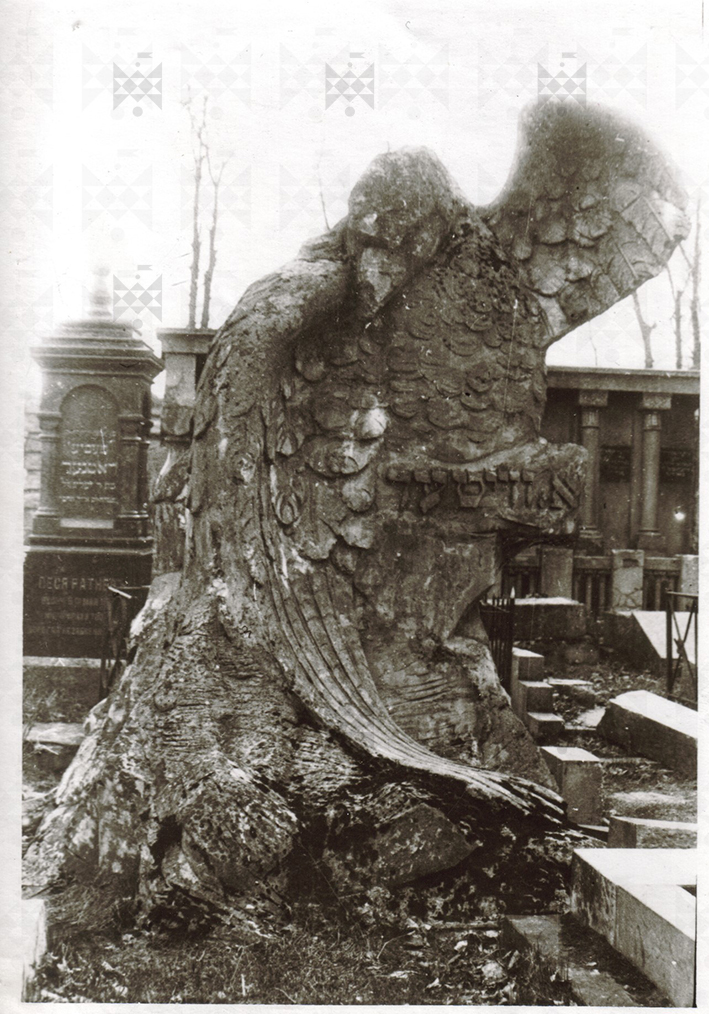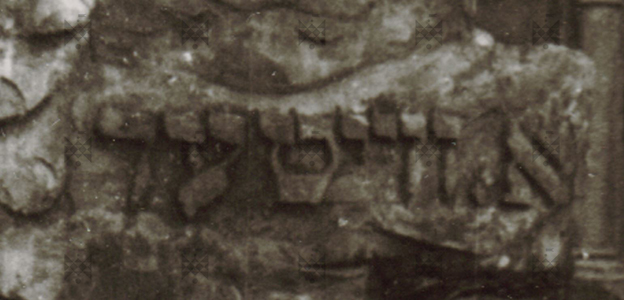EXHIBIT OF THE MONTH |
← |
Published: 2021-03-03

The tombstone of A. Vayter in Vilnius old Jewish cemetery (now Olandų Street) (VŽM 1856)
In this photograph you see a tombstone in the old cemetery of Vilnius Jews (now Olandų St.). For a long time, an error has been ingrained in the museum's collection and description of the photo, which did not provide a proper identification for whom this monument is originally intended for.

The inscription visible in the center of bird motif tombstone states: “A. Vayter“
This person and his tragic death are well known to professional researchers of Vilnius Jewish history, and his exceptional tombstone has been captured in some photographs of the Jewish cemetery. The sophisticated sculpture of a bird with a broken wing marked the tomb of Ayzik Meyer Devenishski (1878-1919). Devenishski, more widely recognized by the creative pseudonym of A. Vayter, is undeservedly forgotten in the history of Vilnius Jews.
Devenishski was a rather prominent political and later cultural figure of that time. Growing up, he received a traditional religious Jewish education, but in his youth, he was fascinated by progressive ideas, became an active bundist, participated in revolutionary activities, for which he was repeatedly imprisoned and persecuted. Disappointed by the political situation, he began his career as a writer, adopted the name A. Vayter, and urged the Jewish intelligentsia and society to return to Jewish culture. As a writer, Vayter is best known for his plays, which were mostly staged by Jewish theaters. The talented editor, writer, and playwright A. Vayter in the prime of his life was killed by a bullet of a Polish army legionnaire.
During attacks and occupation of Vilnius by Żeligowski's entering army in April, 1919 a wave of looting and violence broke out through the city, mostly against the Jews. During this outburst of anti-Jewish violence in Vilnius, Vaiter was among the people who were dragged out of their home and shot in a street by Polish legionnaires (about 60 people were killed in total). This anti-Jewish attack of the Polish soldiers, which was not stopped and even denied by the Polish authorities, started a new stage in the history of the Polish Vilnius-Wilno, where anti-Jewish excesses began to recur from time to time.
An impressive sculptural composition to commemorate the death of A. Vayter was unveiled by The Union of Yiddish Writers and Journalists in Vilnius (Fareyn fun yidishe literatn un zhurnalistn in Vilne), to which A. Vayter belonged until his death. The writer’s life, work, and memory are also immortalized in the book “Vayter-bukh: Tsum ondenk fun Vayter“ (The Book of Vayter: In Memory of Vayter) published by his friends and colleagues in 1920 and in 1923 a comprehensive collection of Vayter’s works “Ksovim” (Writings) was published.
Prepared by historian Rūta Anulytė,
Museology Specialist at the Museum of Culture and Identity of Lithuanian Jews in
Vilna Gaon Museum of Jewish History
| ↑ | ← |
